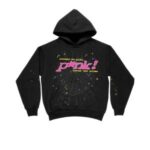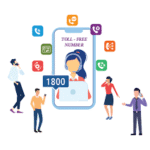Let’s be honest: how often have you clicked on an online store only to close it within seconds because it was either too slow, confusing, or downright sketchy?
We live in a world where users decide in under 3 seconds whether to trust a website, and if your ecommerce website design isn’t pulling its weight, you’re not just losing clicks but real sales.
So, what makes an eCommerce website convert? Keep reading, and this guide breaks it down clearly.
1. A Lightning-Fast, Mobile-Friendly Experience
These online buyers almost always conduct their transactions through their smartphones, whether in bed, at a café, or on a train. If your website offers insufficient speeds or renders poorly, they exit.
Key musts:
- Mobile-responsive theme
- Optimized images and videos
- Lazy loading for speedy presentation
- Good hosting, with minimal redirects
Effectively, slow websites are far more irritating than just an inconvenience. It damages trustworthiness, killing conversion rates by a margin of nearly 7% whenever the time taken for load is increased by one more second!
2. Value Proposition Clear Front and Center
Some seconds will be all you have to convince visitors why they should buy from you instead of the many alternatives they Googled.
How to go about it:
- Create a short, bold headline that focuses on the benefits.
- Avoid being clever; be clear: “Free 2-Day Shipping” beats “We Deliver the Future.”
- Use subheadings or visuals to reinforce your message.
- Your USP should be above the fold.
The priority for any compelling ecommerce web design is to show, not just state, what makes your store unique.
3. Easy and Intuitive Navigation
If they can help it, they never want to spend three clicks to find what they want.
Keep the following in mind:
- Meaningful names such as “Shop,” “New Arrivals,” or “Collections.”
- Have search bars and sorting filters.
- Use sticky menus and breadcrumb navigation
- Group-related products logically
You want your site to feel effortless, like a well-organized store, not a maze.
4. High-Impact Product Pages
Your product page should do the heavy lifting. This is where most decisions happen.
What to include:
- Crisp, zoomable product images (from different angles)
- Descriptions that focus on benefits, not just features
- Size guides, care instructions, and FAQs
- Scarcity indicators like “Only 3 Left!” or “Limited Stock”
- Trust-building elements like “Ships in 24 Hours”
If your ecommerce website design skimps on this, your conversion rate will follow.
5. Strong Call-to-Actions (CTAs)
CTAs are the tipping point between browsing and buying.
Here’s how to make them effective:
- Use action words: “Buy Now,” “Add to Cart,” and “Claim Your Discount”
- Keep the buttons large and visible
- Use contrasting colors to draw attention
- Limit distractions around the CTA button
Great application design companies understand that one solid CTA does more than three scattered ones.
6. Seamless, Friction-Free Checkout Process
Cart abandonment is the enemy. Often, it’s due to complicated or frustrating checkout flows.
Reduce friction by:
- Offering guest checkout options
- Showing a clear progress bar
- Using auto-fill and address suggestions
- Minimizing the number of fields
And don’t forget to include trust symbols like:
- Secure payment icons
- Return guarantees
- Privacy policy links
The smoother the experience, the higher the conversions.
7. Multiple Payment Gateways for Flexibility
Shoppers want choices. Limiting payment options leads to abandoned carts.
Smart strategies:
- Offer all major credit/debit cards
- Integrate wallets like Apple Pay or Google Pay
- Include “Buy Now, Pay Later” options (Afterpay, Klarna)
- Provide options like PayPal for international buyers
This flexibility signals professionalism and trust, key elements in ecommerce website design that work.
8. Social Proof: Let Others Do the Talking
No one wants to be the first person to try a product. Reviews and testimonials help break that fear barrier.
What to showcase:
- Verified customer reviews
- Star ratings and user photos
- Testimonials on landing pages or checkout pages
- Instagram feeds of customers using your product
Even a single 4-star review can increase conversions by 20% or more.
9. Live Chat and Easy Support Access
Customers want quick answers, especially if they’re stuck on payment, shipping, or returns.
Best practices:
- Add live chat with human or chatbot options
- Display your contact info clearly
- Provide quick links to FAQ pages
- Include response time estimates
Think of it as retail floor staff, ready to help immediately.
10. Personalized Recommendations & Retargeting
People love feeling like the site knows them. Use browsing behavior and cart history to personalize the experience.
Smart personalization includes:
- “You may also like” sections
- Recently viewed items
- Cross-selling or upselling suggestions
- Retargeting ads for cart abandoners
Personalization is often built in from the start if you work with a professional application design company.
11. SEO and Content That Attracts the Right Visitors
Organic traffic still reigns. Without proper search optimization, even the best site won’t get noticed.
Boost your visibility with:
- Optimized product titles and meta descriptions
- Schema markup (for products, FAQs, reviews)
- A regularly updated blog with helpful content
- Internal linking between products and resources
An experienced application design company will build your site with this in mind, helping your pages rank and convert.
12. Use Analytics & Test Everything
Guesswork doesn’t grow businesses. Data does.
Set up:
- Google Analytics (GA4)
- Conversion tracking for clicks, forms, and sales
- Heatmaps to see where users get stuck
- A/B testing tools to experiment with layouts, buttons, and offers
Testing isn’t optional. It’s where good ecommerce website design becomes great.
FAQs
Q1: What is a good conversion rate for an eCommerce website?
It varies by industry, but a solid benchmark is around 2%–3%. With optimized ecommerce website design, some brands reach 5% or more.
Q2: How can I improve conversions without redesigning my entire site?
Focus on speed, simplify checkout, and add trust elements like reviews and SSL badges. Small tweaks can have a big impact.
Q3: Is mobile optimization really that important?
Absolutely. Over 60% of eCommerce traffic comes from mobile, and a poorly designed mobile experience leads to lost sales.
Q4: Do I need a professional to design my store?
If you want a reliable, high-performing site, hiring an experienced application design company can save time and help increase ROI.
Final Thoughts
There’s no magic trick to building a high-converting eCommerce site. But there is a reliable formula: fast loading times, mobile-first design, clean product pages, clear CTAs, and trust signals everywhere.
In today’s competitive online space, design isn’t just how things look; it’s how they sell. Whether you’re a new business or scaling up, partnering with a skilled application design company can make all the difference between visitors and real, paying customers.
- Parksville Online Stores That Convert Fast
- Discover top features every Parksville eCommerce website needs to boost trust, speed, and conversions for real business growth.
- ecommerce website design
Related posts:
 Machinery and Equipment Industry Email List: Unlocking Opportunities for B2B Marketing Success
Machinery and Equipment Industry Email List: Unlocking Opportunities for B2B Marketing Success
 Amazon Virtual Assistant: The Perfect Help System for Online Retailers
Amazon Virtual Assistant: The Perfect Help System for Online Retailers
 How to Choose the Right Google Shopping Agency for Your Brand
How to Choose the Right Google Shopping Agency for Your Brand
 Best PPC Services in India: Grow Your Business with the Right Partner
Best PPC Services in India: Grow Your Business with the Right Partner
 Buy Authentic Sp5der Hoodies – Quality, Comfort & Style Buy Authentic Sp5der Hoodies – Quality, Comfort & Style
Buy Authentic Sp5der Hoodies – Quality, Comfort & Style Buy Authentic Sp5der Hoodies – Quality, Comfort & Style
 CodeIgniter Development Company: Empowering Scalable Web Solutions for Modern Businesses
CodeIgniter Development Company: Empowering Scalable Web Solutions for Modern Businesses
 How Do Toll Free Number Service Streamline Call Center Operations
How Do Toll Free Number Service Streamline Call Center Operations
 Can Tourism Companies Use SMS Smart Links for Package Details?
Can Tourism Companies Use SMS Smart Links for Package Details?







